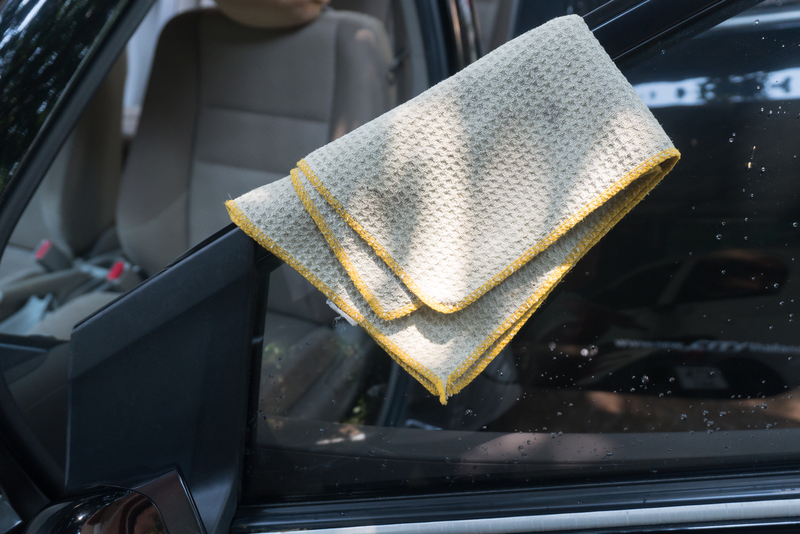Unlock the Secret: Impeccable Enamel Oven Tray Maintenance
Posted on 10/09/2025
Unlock the Secret: Impeccable Enamel Oven Tray Maintenance
Maintaining enamel oven trays can seem daunting, especially when they're stained or burnt after frequent use. However, understanding the right techniques for enamel oven tray maintenance can extend the life of your trays, keep them looking pristine, and ensure consistently delicious cooking outcomes. With a focus on practical advice and a comprehensive approach, this guide will unlock the secret to impeccable enamel oven tray maintenance, covering everything from daily cleaning to long-term care strategies.
Table of Contents
- Why Enamel Matters: Benefits of Enamel Oven Trays
- Daily Cleaning Routine for Enamel Oven Trays
- Removing Tough Stains and Burnt-On Food
- Deep Cleaning Enamel Oven Trays
- Preventative Maintenance Tips
- Common Mistakes to Avoid
- Prolonging the Lifespan of Your Enamel Oven Trays
- Frequently Asked Questions About Enamel Oven Trays
- Conclusion: Impeccable Care for Enamel Oven Trays
Why Enamel Matters: Benefits of Enamel Oven Trays
Enamel oven trays are popular in kitchens worldwide for good reason. Enamel is created by fusing powdered glass onto metal at high temperature, resulting in a smooth, non-porous, and durable surface. Understanding the unique advantages of enamel trays can help you appreciate why special care routines are worthwhile.
- Non-stick Surface: Food is less likely to stick, making them easier to clean compared to bare metal trays.
- Chemically Inert: Enamel doesn't react with acidic foods, preventing unwanted flavors and stains.
- Rust Resistant: The enamel layer shields the metal from moisture, safeguarding against rust.
- Attractive Appearance: A glossy finish adds visual appeal to your bakeware.
- Heat Resistant: Designed to withstand high oven temperatures, perfect for roasting and baking.
With so many advantages, it's clear that proper enamel oven tray cleaning and maintenance is crucial for long-lasting performance.
Daily Cleaning Routine for Enamel Oven Trays
Regular cleaning is the foundation of impeccable enamel oven tray maintenance. After each use, removing food residue promptly will prevent tough stains and burnt-on grime from building up over time.
Step-by-Step Daily Cleaning Guide
- Cool Down: Always allow your enamel tray to cool before cleaning to avoid thermal shock and cracks.
- Soak: Fill the tray with warm, soapy water and let it soak for 10-15 minutes. This loosens food residues.
- Gentle Scrub: Use a non-abrasive sponge or cloth to wipe away debris. Avoid using steel wool or harsh scouring pads that can scratch the enamel coating.
- Rinse and Dry: Rinse thoroughly with hot water to remove soap scum, then dry completely with a towel.
Pro tip: Never leave your enamel tray soaking overnight, as prolonged moisture exposure can affect the underlying metal over time, especially if there are chips in the enamel.
Removing Tough Stains and Burnt-On Food
Even with daily care, enamel oven trays can develop stubborn stains or burnt patches. Tackling these quickly restores your tray's appearance and hygiene.
Effective Home Remedies
- Baking Soda Paste: Combine baking soda with a little water and apply to stains. After 10 minutes, gently scrub with a soft-bristled brush.
- White Vinegar: Pour a mixture of vinegar and water onto the tray, let soak for 15 minutes, then wipe clean. Vinegar helps dissolve grease and neutralize odors.
- Lemon Juice: The natural acidity of lemon also helps to break down baked-on residue. Rub half a lemon over affected spots, let sit, and rinse.
- Dish Soap and Hot Water: For less severe stains, a generous squirt of dishwashing liquid in hot water allows fatty or sugary residues to lift away more easily.
What Not to Use
Avoid abrasive powders, bleach, or ammonia which can damage the sleek surface or discolor the enamel.
Deep Cleaning Enamel Oven Trays
For trays that haven't received regular care or have become heavily soiled, deep cleaning is necessary for impeccably maintained enamel baking trays.
Deep Cleaning Method
- Pre-Soak: Fill the tray with hot water and a few drops of dish soap. Soak for at least 30 minutes or up to an hour to loosen stubborn debris.
- Baking Soda & Vinegar Reaction: Sprinkle baking soda over the tray, then pour vinegar over it. The foaming action helps break up stubborn spots.
- Gentle Scrub: Use a plastic spatula or soft-bristled brush to lift away grime--never use anything metallic or sharp!
- Rinse Thoroughly: Ensure all cleaning residues are rinsed away to avoid affecting food flavor or safety.
- Dry Completely: Avoid stacking or storing your tray while it's damp, as this can encourage rust where enamel may be chipped.
Preventative Maintenance Tips
Preventing damage is as important as cleaning. Here's how you can master enamel oven tray care and prevent costly mistakes:
- Never Use Sharp Objects: Avoid cutting food directly in the tray to prevent chips and scratches.
- Use Oven-Safe Liners: Baking parchment or silicone mats offer a protective barrier, simplifying cleanup and reducing wear.
- Handle with Care: Don't bang trays together or drop them--enamel, though tough, can chip if mishandled.
- Watch Temperature Extremes: Move the tray from oven to counter, not into cold water, to avoid thermal shock and cracks.
- Address Chips Immediately: If you spot a chip in your enamel, patch it with a food-safe enamel repair kit to prevent moisture from penetrating and rusting the metal base.
Common Mistakes to Avoid
While enamel baking tray maintenance is generally straightforward, a few common mistakes can compromise your tray's performance and longevity:
- Ignoring Stains: Allowing grease and residues to sit can lead to discolored, sticky surfaces that are harder to clean later.
- Using Abrasive Tools: Metal scouring pads and harsh cleaners can scratch the glossy surface, making it more prone to sticking and stains.
- Drastic Temperature Changes: Moving directly from the oven to cold water weakens enamel, causing cracks.
- Not Drying Properly: Storing trays when damp can lead to rust, especially near any chipped areas.
- Stacking Without Protection: Placing heavy bakeware atop enamel trays can cause chipping unless a protective cloth is used as a buffer.
Prolonging the Lifespan of Your Enamel Oven Trays
Caring for enamel oven trays isn't just about cleaning, but about adopting habits that protect and preserve their impeccable finish:
Smart Usage Strategies
- Season the Tray Occasionally: Rub a thin coat of cooking oil on the surface and heat briefly in the oven. This helps boost the naturally non-stick quality and can help fill microscopic surface imperfections.
- Protect the Edges: Since the tray edges are most vulnerable to chipping, use silicone edge protectors if frequently stacking or transporting trays.
- Avoid Dishwasher Use: Most manufacturers advise against putting enamel trays in the dishwasher, as harsh detergents and strong water jets can cause chipping and dullness. Hand washing is always best.
- Store Carefully: Store trays vertically if possible, separated by soft fabric or non-slip matting to prevent knocks and chips.
Frequently Asked Questions About Enamel Oven Trays
-
Can I use metal utensils on my enamel oven tray?
It's best to use wooden or silicone utensils to avoid scratching the enamel surface, even though enamel is more durable than some other coatings. -
Is it safe to cook acidic foods on enamel trays?
Absolutely! Enamel is chemically inert, so you can bake tomatoes, citrus, and other acidic foods without worry. -
What should I do if my enamel tray has chipped?
Clean the area thoroughly and repair with a food-safe enamel repair kit. Avoid using trays with large chips where food will be in contact with exposed metal. -
How do I remove discoloration from my enamel bakeware?
Try baking soda or a paste of hydrogen peroxide and baking soda. Always test in a small area first and rinse well. -
Is it okay to cook at very high temperatures with enamel trays?
Enamel is designed to withstand oven temperatures, but avoid sudden temperature shifts to prevent cracking or crazing.
Conclusion: Impeccable Care for Enamel Oven Trays
Achieving and maintaining impeccable enamel oven tray maintenance is about more than just cleanliness--it's about protecting a valuable kitchen investment. By following daily cleaning routines, using tried-and-tested stain removers, avoiding common pitfalls, and practicing preventative maintenance, your enamel oven trays will not only last longer but perform better, meal after meal.
Incorporate these expert tips into your kitchen habits and watch as your enamel trays stay as beautiful and functional as the day you bought them. Unlock the secret of impeccable enamel oven tray maintenance today and enjoy spotless, long-lasting cookware that brings joy to every baking session.
Have your own tip for caring for enamel bakeware? Share your favorite enamel oven tray care secrets in the comments!







